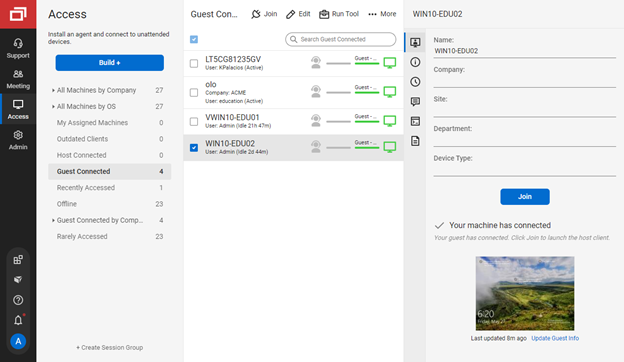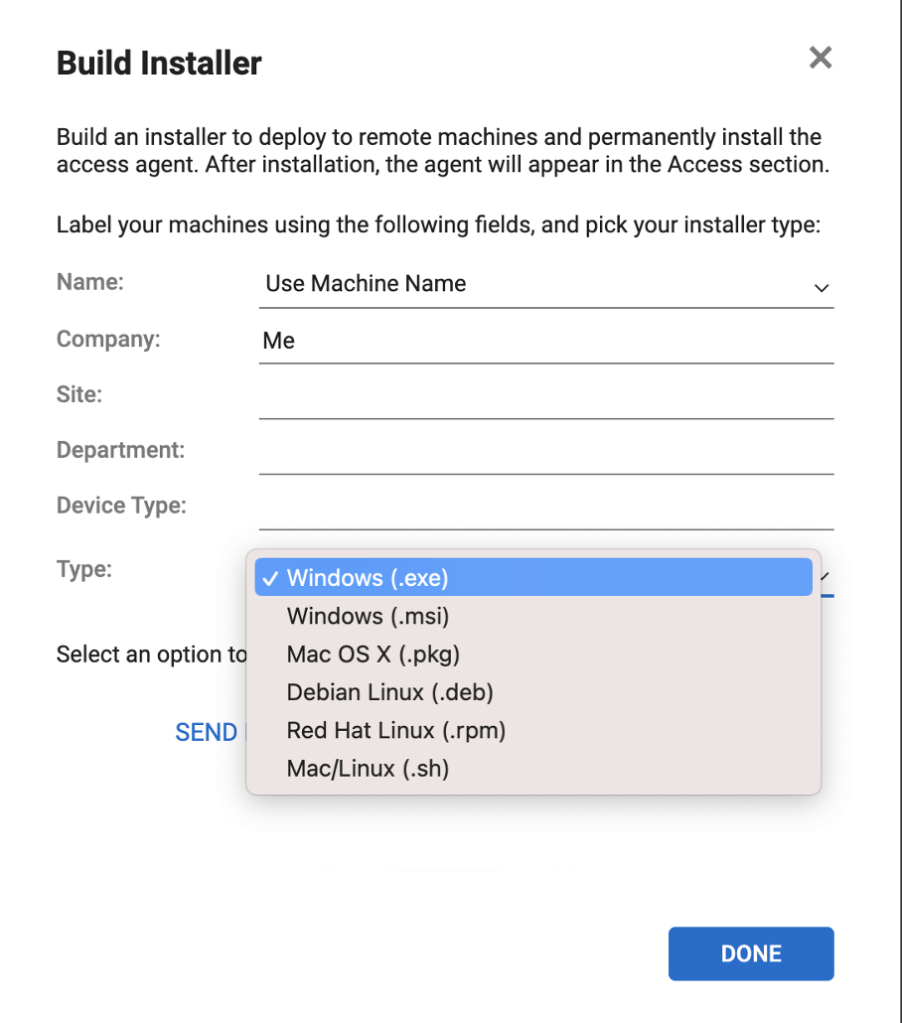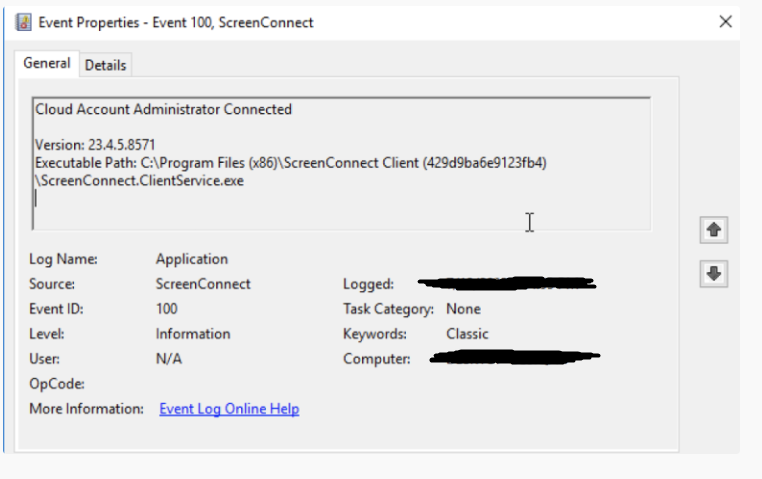Recently observed an uptick in threat actors abusing RMM tools for initial access via phishing. I decided to investigate several popular RMMs — AnyDesk, ConnectWise ScreenConnect, and **Atera **— and published my findings on how APT groups abuse these platforms in my DarkAtlas research. If you’re tracking modern intrusion trends, these tools are worth watching closely.
Why RMMs Are Abused
RMM platforms provide remote access, unattended control, file transfer, and scripting. While built for IT management, attackers frequently repurpose them for initial access, persistence, remote control, and lateral movement. Their administrative power, combined with custom installers, invite links, and public URLs, makes them high-value targets — and a critical focus for DFIR and threat hunting.
AnyDesk: Declining but Still Abused
I recently came across a CyberTriage blog discussing AnyDesk. However, many threat actors have moved away from AnyDesk because it has become easier to detect.
Investigating ScreenConnect Abuse
That shift led me to investigate ScreenConnect, which has become quite trendy among adversaries. I started with the free edition (not sure if it behaves exactly like the paid version), but I still wanted to dive in and see how it could be abused.

ScreenConnect is an RMM solution developed by ConnectWise that administrators use to deploy and run remote tasks across endpoints.
While it’s intended to simplify management (often as an alternative to WMI), adversaries have learned to abuse it for initial access, remote control, persistence, and lateral movement — so it’s become an important tool to monitor in DFIR and threat hunting
ScreenConnect Capabilities
ScreenConnect (by ConnectWise) enables platform-independent remote access across:
- Windows
- macOS
- Linux
- iOS
- Android
- and more
Key Features include:
- VPN functionality
- REST API integration
- File transfer
- Session logging
- Remote printing
- Unattended access
ScreenConncet Indicators of Existence
Installer Artifact:
ScreenConnect.ClientSetup.msiKnown path(s):
C:\Users\Kh4lifa\AppData\Local\Temp\ScreenConnect\25.4.20.9295\760c1fc14562a55f\ScreenConnect.ClientSetup.msi👉 The installer observed for ScreenConnect is an .msi package that appears to execute primarily in-memory, reducing on-disk artifacts and making basic signature/AV checks less effective. Attackers favor this technique because it lowers the visibility of installation and persistence actions to traditional tools that scan files on disk.
Delivery Methods Attackers Exploit
During deployment, ScreenConnect presents a management panel that allows an administrator to create a custom access URL (for example: kh4lifa.test.com).

Attackers abuse this by:
- Hosting phishing pages
- Using invite links to lure victims
- Deploying custom installers that mimic legitimate workflows
Because the builder and invite links can be generated directly from the console, adversaries gain a flexible phishing surface.

On the top-left of the ScreenConnect management panel there is a Build+ option that lets operators create a customized “builder.”
This builder can be configured to either install the agent directly or to generate an invite link that walks a target through multiple stages to enroll the agent.
Because builders and invite links can be created and customized from the console, they provide a flexible delivery surface that attackers may abuse to craft staged phishing flows or to mask enrollment activity in legitimate remote-management workflows.

After deployment, the ScreenConnect installer drops a Windows client binary (commonly observed as a WindowsClient executable) which launches and registers itself as a running service/process to provide remote connectivity. Because the agent is installed and executed on the endpoint, defenders should treat this binary as the primary artifact for detection, telemetry collection, and incident response.
C:\Program Files (x86)\ScreenConnect Client (760c1fc14562a55f)\ScreenConnect.WindowsClient.exe
When executed, the ScreenConnect client launches a process named
ScreenConnect.WindowsClient.exe
C:\Program Files (x86)\ScreenConnect Client (760c1fc14562a55f)\ScreenConnect.WindowsClient.exeConfig/Log Files
USER Log file
Filename (context): user.config — a ScreenConnect client configuration file.
Type: XML configuration (System.Configuration client settings).
Purpose: maps hostnames (custom access URLs) to resolved IP addresses and records a timestamp for when that mapping was observed/created.
Path:
C:\Windows\SysWOW64\config\systemprofile\AppData\Local\ScreenConnect Client (760c1fc14562a55f)\user.config
This IP appears to be malicious and was used to communicate with suspicious domains.

System.conf
- Filename (context):
system.config– a ScreenConnect core configuration file.

- Type: XML configuration (application and client launch parameters).
- Purpose: stores connection settings, including hostnames/IPs, ports, and encrypted launch keys that define how the ScreenConnect client connects to its server.
- Path:
C:\Windows\SysWOW64\config\systemprofile\AppData\Local\ScreenConnect Client (760c1fc14562a55f)\user.config
After the initial connection of the ScreenConnect, a Security event is generated, recording Event ID 4573
However, this evidence alone is not sufficient for a full investigation. To gain deeper insights, I will extend the analysis and examine additional data sources and system artifacts.
After the remote session was established, Application Log events with IDs 100 and 101 were recorded. For deeper analysis, we can focus on the details of Event ID 100.

We can now examine Event ID 101 for further insights.

I also searched for any files that might record the chat but did not find any. However, during memory analysis, I was able to recover the chat data. Unlike AnyDesk, which stores chat logs in configuration files, ScreenConnect stores them in memory, making memory acquisition essential for retrieving chat artifacts.

AnyDesk chat files created
File Transfer
Files can also be transferred directly through the ConnectWise web interface.

Sending Files
A file was sent to the client using the host software. This action resulted in the creation of a new folder located at C:\Users\Kh4lifa\Documents\ConnectWiseControl\Files, which contained the transferred file.

Event 201 Recorded while sending a file
Receiving files
While receiving file from the victim machine there’s no event’s id collected.
but there’s an edit occurred to the user.config file.
Conclusion
Like many legitimate RMM platforms, ScreenConnect is powerful — and that power makes it attractive to adversaries.
My investigation shows attackers exploit:
- Custom URLs, invite links, and builders
- Low disk footprint installers
- Persistent Windows clients and configs
- Memory-only artifacts like chat logs
👉 For defenders, monitoring these indicators and logs is critical in DFIR and threat hunting investigations.
💡 Learn how DarkAtlas helps enterprises detect and respond to RMM abuse — see our Security Products